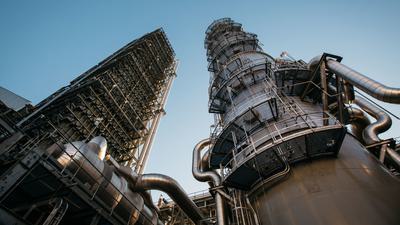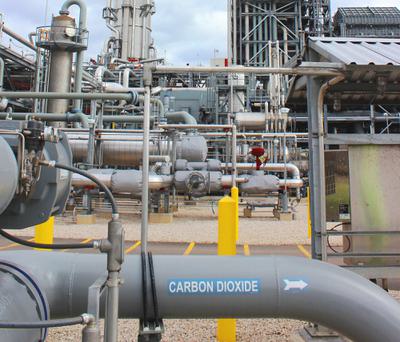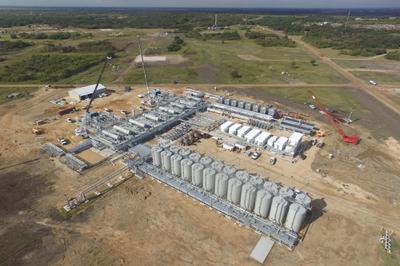High cost has always been the main obstacle to wider deployment of carbon capture and storage technology.
But other environmentalists argued that one provision of the new law — promoting use of captured carbon dioxide for “enhanced oil recovery” — would serve, as Greenpeace put it, “to promote oil supply and keep us hooked on fossil fuels.” The Natural Resources Defense Council (NRDC), which actively supported the legislation up to the final buzzer, acknowledged that projects encouraged by the new incentives will cut carbon pollution and create jobs. But ultimately the NRDC backed away from the bill, with staffers David Doniger and Danielle Droitsch saying in a blog post, “We don’t support subsidies for fossil fuel production, including subsidies for enhanced oil recovery” when the urgent need is “to reduce our dependence on those fuels.”
The new law boosts tax credits for projects that capture carbon emissions and store them by any of three means:
- Pumping them into geological formations deep underground, with the tax credit gradually rising over 10 years to $50 a ton, up from $20 under existing law. The new law extends eligibility for this tax credit to smaller facilities, potentially making carbon capture and storage by industrial manufacturers more attractive.
- Use of captured emissions to manufacture other products, including chemicals, concrete, and algae-based biofuels, with a tax credit of $35 per ton of emissions removed from the atmosphere (minus the tonnage released over the lifecycle of the product). It’s a category not previously eligible for any tax credit.
- Enhanced oil recovery (or EOR), with captured carbon dioxide emissions pumped into depleted oil wells to recover “stranded oil” not accessible by conventional means. The captured emissions then get sequestered underground, for a tax credit of $35 a ton — more than triple the old $10 credit. The Sierra Club, Earthjustice, and other groups objected that this provision amounts to “the single biggest subsidy to the fossil fuel industry in the United States,” with a price tag they estimated at $2.8 billion a year. But environmental backers countered that a barrel of oil produced in this fashion is responsible for 37 percent fewer carbon dioxide emissions — after factoring in the emissions sequestered in the production process —than a barrel produced by conventional means. It also uses existing wells instead of pushing companies to drill new ones.
The Petra Nova facility, located outside of Houston, captures 5,000 tons of CO2 daily. Courtesy of NRG
Carbon capture and storage (or CCS) technology has been around for decades. But it has recently attracted increasing support from industry, some environmentalists, and the Intergovernmental Panel on Climate Change as a tool for reducing emissions during the critical transition away from fossil fuels over the next few decades. Worldwide, 17 large-scale CCS facilities are now in operation, mainly at natural gas processing plants, but also at factories producing hydrogen, ethanol, fertilizer, and steel. Another 20 are in various stages of development or construction. In one major setback for carbon capture, the utility Southern Company last year walked away from a costly CCS-based attempt to make “clean coal” a reality at a power plant in Mississippi. (It decided to continue burning natural gas.)
Several companies, along with university research laboratories, are developing technologies to capture carbon dioxide directly from the atmosphere. A Canadian company, Carbon Engineering, is now operating a pilot plant using the captured carbon to manufacture a liquid fuel that it says could eventually become price-competitive under California and British Columbia’s low-carbon fuel standards. (The new U.S. legislation also makes carbon capture from the atmosphere eligible for tax credits for the first time.)
Last year, the U.S. utility NRG partnered with JX Nippon, a Japanese oil and gas company, to open a carbon capture facility at the W.A. Parish power plant outside Houston. It now captures 5,000 metric tons of carbon dioxide emissions a day, representing up to 90 percent of the emissions from one of the plant’s four coal-fired units. Also in the Houston area, NetPower, a startup, uses a different carbon capture and storage technology — again combined with enhanced oil recovery — to remove all of the emissions from a new natural gas-powered generating plant.
Proponents argue that the new federal incentives will help kick-start carbon capture and storage.
High cost has always been the main obstacle to wider deployment of carbon capture and storage technology. The only way to amortize that expense has been to make a buck on the captured carbon — typically through enhanced oil recovery. The new NRG facility, for instance, cost $1 billion, including $190 million in federal support. The recovered emissions get piped 80 miles and pumped underground at the West Ranch oil field to drive the production of about 5,000 barrels of oil a day, up from 300 barrels by conventional means. But even that income hasn’t added up, according to NRG spokesman David Knox. In 2014, when the price of oil topped $110 a barrel, the carbon-capture facility would have been “basically printing money,” he said. But at the current price of $60 to $65 a barrel for West Texas crude, “it’s just paying for itself,” and NRG has no plans to try it again any time soon.
Proponents argue that the new federal incentives will help to close that gap and kick-start carbon capture and storage as existing federal and state incentives have done for renewable energy. “ said Bob Perciasepe, a deputy administrator of the Obama-era Environmental Protection Agency and now president of the Center for Climate and Energy Solutions. Tax incentives, he added, enabled “even the wind industry to drop the cost to the point where it can now almost compete straight up” with conventional power sources. Developing cheaper carbon capture and storage technologies will be particularly critical, he said, as India, China, and sub-Saharan Africa continue to build new coal-fired power plants.
CO2 emissions captured by the Petra Nova power plant are piped 80 miles to the West Ranch oil field and used to recover hard-to-reach oil. Courtesy of NRG
Apart from cost, one potential caveat with carbon capture is uncertainty about whether underground storage will be permanent. Greenpeace has argued that carbon dioxide emissions injected underground for enhanced oil recovery come “back up the well with the oil.” But Kurt Waltzer of the Clean Air Task Force notes that the new law requires monitoring and verification to ensure that that doesn’t happen. Greenpeace has also argued that carbon emissions stored in the saline aquifer formations considered ideal for permanent sequestration “could uncontrollably make its way back to the surface.”
But the 2015 MIT study it cites as evidence doesn’t make that case. In place of conventional thinking that exposure to saline turns all of the injected carbon dioxide into rock, the co-authors merely argue that mineralization may occur only at the interface between the two materials, trapping the rest of the carbon dioxide in a “carbon-encrusted bubble.” The co-authors have since published an update calling “the ultimate fate” of sequestered emissions “an unresolved question that is not addressed in our paper.”
“We have stored about 1.5 billion tons of carbon dioxide in subsurface formations in the United States since the 1970s,” said Crabtree of the Great Plains Institute, with “very few incidents of any leakage whatsoever. We have decades of experience and a tremendous track record in terms of oil and gas formations, and the federal regulations for saline formations are more stringent, recognizing that less is known.
Some see passage of the new incentives as necessary if we hope to avoid catastrophic climate change.
“If you care about climate,” Crabtree added, “you can’t pick and choose the science and the technical facts that you work with. It can be very frustrating to see a lot of attention being devoted to the risks of storing carbon dioxide in the subsurface, when the great risk that we have to focus on is what’s happening with carbon dioxide being released into the atmosphere.” Opposition to the new tax incentives came not just from environmentalists, he noted, but also from people in industry “who see carbon capture and storage as basically ceding a climate agenda to the left. You had diametrically opposed camps opposing the same legislation for opposite reasons.”
That makes passage of the new incentives a triumph — and a necessary one if we hope to avoid catastrophic climate change, according to Waltzer. The scientific consensus is that “we need to zero out” emissions from the global electricity system by mid-century “and then begin to have negative emissions,” meaning more carbon dioxide being taken out of the atmosphere than we put into it.
“That’s a heckuva challenge,” said Waltzer, “and having carbon capture infrastructure will be crucial” to making it happen.





